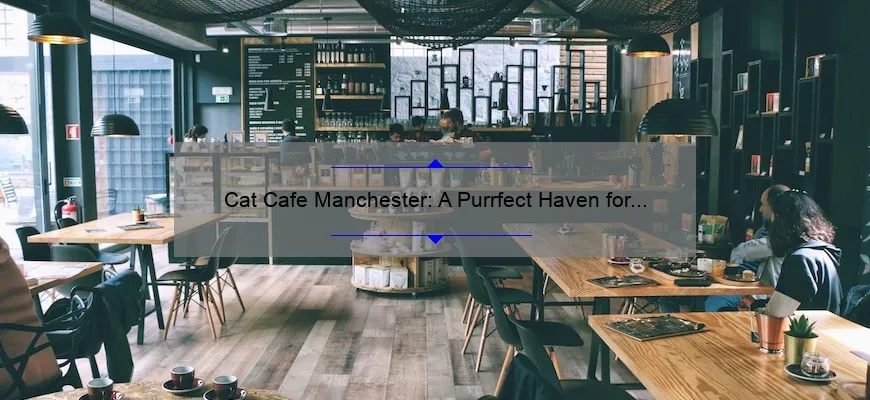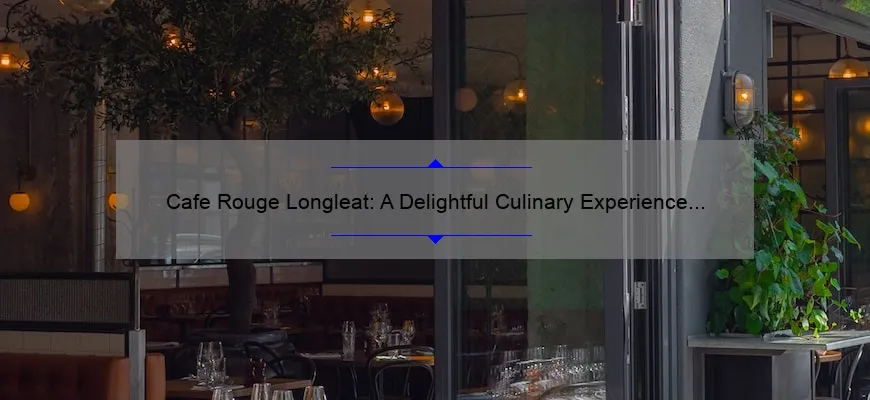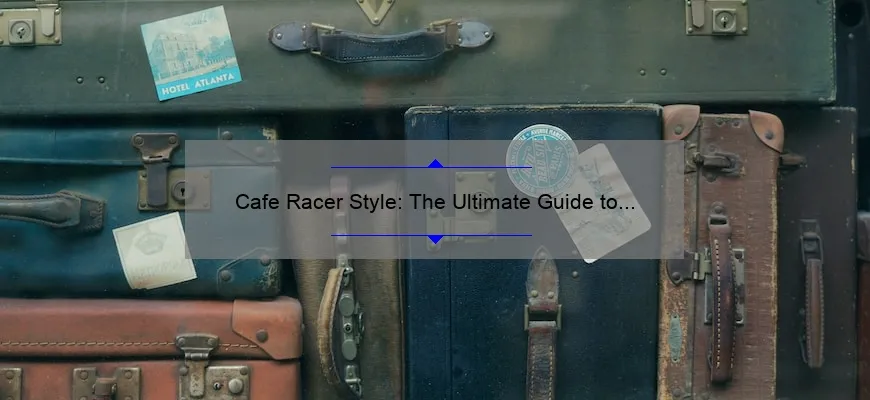- Short answer: Cafe wall illusion
- Unveiling the Fascination: Exploring the Cafe Wall Illusion
- Diving into the Mechanics: How Does the Cafe Wall Illusion Work?
- Mastering the Art: Step-by-Step Guide to Creating Your Own Cafe Wall Illusion
- Demystifying Common Questions: FAQs About the Cafe Wall Illusion
- Beyond Borders: Unleashing Creative Variations of the Cafe Wall Illusion
- Impact and Applications: Discovering the Cognitive Significance of the Cafe Wall Illusion
Short answer: Cafe wall illusion
The cafe wall illusion is a visual phenomenon where horizontal lines appear to be sloping, creating an illusion of tilted bricks. It was named after the effect seen on the walls of a British cafe. The illusion is attributed to contrast and perception, as the alternating light and dark tiles trick the brain into perceiving slopes that aren’t actually present.
Unveiling the Fascination: Exploring the Cafe Wall Illusion
Unveiling the Fascination: Exploring the Cafe Wall Illusion
Welcome, dear readers, to our blog post unveiling the mesmerizing and intriguing phenomenon that has captivated minds for ages—the Cafe Wall Illusion. Prepare to embark on a journey of wonder and discovery as we delve into the depths of this mind-boggling optical illusion.
First things first, let us set the stage. Picture yourself strolling down a quaint European street, passing by cafes bustling with patrons sipping their espressos. Amidst this ambiance, you encounter a peculiar patterned wall that piques your curiosity. Little do you know that this simple facade holds an enigma that challenges your senses in ways you never anticipated.
Now, what exactly is the Cafe Wall Illusion? In simple terms, it is an optical illusion where horizontal lines appear to be slanted due to the arrangement of alternating light and dark tiles. Postulated by Dr. Richard Gregory in 1979, this illusory effect plays tricks on our visual system and leaves us questioning reality itself.
To fully grasp its enchanting nature, let’s take a closer look at its underlying mechanisms. The key lies in how our brain processes contrast differences between adjacent elements within a pattern. The alternating black and white tiles create sharp contrasts that are amplified when placed next to each other. As a result, our visual system interprets these edges as slanted lines rather than parallel ones.
But here’s where things get truly captivating—despite knowing the tiles are parallel, our brains refuse to accept it! This illusion reveals an extraordinary aspect of human perception where even explicit knowledge fails to sway our perceived reality.
However, dear readers, there’s more than meets the eye with Café Wall Illusion. It has baffled scientists and inspired artistic creations alike for decades. Some theories suggest that when viewing the pattern from afar or through squinted eyes, we can partially alleviate the distortion and perceive the true horizontal alignment of the tiles. This intriguing insight reveals how context and viewing conditions can alter our perception of reality.
This visual puzzle has not only ignited scientific curiosity but also stirred art enthusiasts across the globe. Artists have employed this illusion as a muse, infusing their works with its confounding allure. From paintings to murals, the Café Wall Illusion continues to transcend boundaries and stimulate creative minds in unprecedented ways.
So why are we so fascinated by this optical enigma? Perhaps it’s the human innate desire to unravel mysteries that drives us. Or maybe it’s simply the sheer beauty of an illusion that challenges our senses and reminds us of the intricacies within our own cognition.
In conclusion, dear readers, we hope you have relished this deep dive into the captivating realm of Cafe Wall Illusion. Its ability to deceive our vision unveils profound insights into human perception while leaving us in awe of its charm. Next time you stumble upon a seemingly ordinary wall covered in alternating tiles, take a moment to appreciate the intricate dance between light and shadow—therein lies an illusion waiting to mesmerize your senses!
Diving into the Mechanics: How Does the Cafe Wall Illusion Work?
Title: Diving into the Mechanics: How Does the Cafe Wall Illusion Work?
Introduction:
In the vast realm of optical illusions, few captivate our minds and challenge our perception like the intriguing Cafe Wall illusion. Although it may sound like a simple trickery, this illusion continues to baffle even the most seasoned observers. So, let’s embark on a journey dissecting the mechanics behind this mind-bending phenomenon, unraveling its secrets along the way.
The Basics:
At first glance, the Cafe Wall illusion presents itself as a peculiar arrangement of black and white blocks resembling tiles on an angled wall. However, upon further inspection, a strange effect emerges – horizontal lines appear to be slanted or distorted due to staggered placement. But how does this seemingly ordinary pattern deceive our visual system so effortlessly?
The Role of Contrast:
To comprehend how the Cafe Wall illusion operates, we must acknowledge one of its key elements: contrast. Our brains naturally perceive edges and boundaries between contrasting colors or shapes more vividly than uniform areas. In this case, the sharp contrast between alternating black and white blocks plays a pivotal role in manipulating our interpretation.
The Misleading Alignment:
Now comes the crucial part – understanding why these parallel horizontal lines seem skewed. By arranging tiles in an offset manner with vertical white lines running through them, an impression of diagonal misalignment is created within our perception. Our brains instinctively try to align similar segments vertically but are faced with mismatched intersections due to varying tile sizes.
Interacting Gradients:
Adding another layer to this captivating image’s complexity are subtle gradients that emerge from light gray shading blended across neighboring tiles. As these gradients interact with adjacent straight black lines and offsets caused by tile sizes, they enhance the perceived distortions along horizontal edges significantly.
Tickling Your Brain Cells – Filling in Missing Information:
Our brain constantly works to create coherent representations of visual stimuli in real-time. When presented with slightly ambiguous information like the Cafe Wall illusion, it stubbornly attempts to find order and perceive familiar patterns. In this case, the misalignment of tiles urges our brains to draw imaginary lines connecting the slanted edges, reinforcing the distorted perception.
Parallel Processing:
An additional aspect that contributes to our susceptibility to illusions lies in how our brain processes visual information. Instead of analyzing each element individually, our mind tends to group related details and evaluates them as a whole. Consequently, combining parallel processing with misleading cues triggers an immediate perceptual response emphasizing the illusory effect.
The Influence of Surroundings:
Interestingly enough, the surrounding context can also influence the strength of this illusion. When viewed in isolation, without any reference points nearby, some observers may not experience the illusion as strongly as others surrounded by contrasting elements or similar patterns. This phenomenon highlights how contextual factors shape our perception and impact optical illusions’ potency.
In Conclusion:
The Cafe Wall illusion is a remarkable testament to both the power and limitations of human perception. By skillfully leveraging contrast, misalignment, gradients, missing information filling mechanisms within our brains, this simple yet cunning arrangement of black and white tiles manages to baffle us time and again. The interplay between these intricacies ultimately leads to altered perceptions that challenge what we believe to be true through a captivating warping effect on reality.
Mastering the Art: Step-by-Step Guide to Creating Your Own Cafe Wall Illusion
Welcome to our blog! Today, we are excited to share with you a step-by-step guide on how to create your very own cafe wall illusion. Get ready to dive into the world of optical illusions and master this fascinating art form that will captivate anyone who enters your space.
The Cafe Wall Illusion has gained popularity over the years for its ability to trick the eye and create an intriguing visual effect. The concept originated from a popular optical illusion seen in cafes, where horizontal lines appear to be sloping due to the arrangement of alternating black and white tiles. With some creativity and careful execution, you too can bring this captivating illusion into your own home or establishment.
Step 1: Gather Your Materials
To begin, gather all the necessary materials. You will need a measuring tape, painter’s tape, a level, paint in two contrasting colors (traditionally black and white), paintbrushes or rollers, and painter’s drop cloth or newspaper to protect your work area.
Step 2: Prepare Your Wall
Start by preparing the wall you wish to apply the cafe wall illusion on. Ensure it is clean, dry, and smooth before attempting any painting. If needed, use sandpaper or filler solution to fix any imperfections that might affect the final result.
Step 3: Measure & Mark
Using a measuring tape and level, mark evenly spaced vertical lines on your wall. The ideal spacing typically follows a pattern of one unit apart from each other followed by two units apart alternatively (e.g., 1 inch – 2 inches – 1 inch – 2 inches). Make sure these lines are straight as they will serve as guides for creating the illusion.
Step 4: Start Painting
Now comes the fun part – painting! Begin by painting every other rectangular section between your marked lines with one color (traditionally black). Use painter’s tape along the edges to ensure clean lines. Alternatively, you can use a smaller paintbrush for more precision if you prefer.
Step 5: Allow Drying Time
Once you have finished painting the black sections, let them dry completely. Follow the instructions provided on your chosen paint to determine appropriate drying time. Remember, patience is key to achieving a flawless result.
Step 6: Apply Second Color
After the black sections have dried, remove the painter’s tape carefully. Now it’s time to apply the second color (traditionally white) to the remaining rectangular sections. Again, use painter’s tape for clean edges and take your time to create sharp lines.
Step 7: Final Touches
Allow the second color to dry thoroughly before removing any remaining painter’s tape. Take a step back and admire your work thus far! This is an ideal time to make any necessary touch-ups or refine any areas that may require additional attention.
Step 8: Add Decorative Elements
To elevate your cafe wall illusion even further, consider adding decorative elements such as framed artwork, mirrors, or vintage signs within the painted sections. These accents will enhance the overall visual appeal and provide an extra layer of depth.
Congratulations! You’ve successfully created your own captivating cafe wall illusion. Step back and marvel at how this optical illusion plays tricks on anyone who gazes upon it. It is truly a masterpiece that showcases your skills in mastering this art form.
Remember, creating a cafe wall illusion requires attention to detail but also allows room for creativity and personalization. Feel free to experiment with colors other than black and white or adapt the pattern spacing according to your preference.
Now go forth with confidence and make your space an enchanting haven with this mesmerizing optical illusion. Enjoy watching as visitors are left astounded by your artistic prowess!
Demystifying Common Questions: FAQs About the Cafe Wall Illusion
Demystifying Common Questions: FAQs About the Cafe Wall Illusion
There is something intriguing about illusions that captivates both our eyes and our minds. Among the pool of optical tricks, the Cafe Wall Illusion has gained quite the reputation for its deceptive simplicity. As one gazes upon a seemingly well-constructed pattern of tiles, an astonishing twist occurs – horizontal lines appear to curve. This mind-boggling phenomenon prompts many curious individuals to inquire further and seek answers to their burning questions. In this blog post, we aim to shed light on some of the most frequently asked questions about the illustrious Cafe Wall Illusion.
1. What exactly is the Cafe Wall Illusion?
The Cafe Wall Illusion refers to a perceptual phenomenon that creates an erroneous perception of a slanted or curved grid due to alternating rows of black and white tiles appearing offset from each other. Despite being parallel, these rows create an illusion where it seems as though they are sloping downward or curving.
2. How does this illusion work?
The key behind this illusion lies in contrast. When viewing the patterned wall, our vision system attempts to distinguish between the dark lines (mortar) separating each tile and their adjacent lighter-colored tiles (brick). Our brain typically associates darker hues with heavier weight or shading, leading it to interpret these dark lines as slightly closer together than they actually are. Consequently, this misguided perception causes us to see curves where none exist.
3. Who discovered this mesmerizing effect?
This beguiling optical trick was first documented by British psychologist Richard Gregory in 1973 at Bristol University’s cafeteria wall, which explains its renowned name as the “Cafe Wall Illusion.” The combination of simplicity and bafflement led it to rapidly capture public attention around the world.
4. What influences how strongly we perceive this illusion?
Various factors influence our susceptibility to perceiving exaggerated curves in relation to the Cafe Wall Illusion. The size and width of the tiles, as well as the luminance contrast between the black lines and white tiles, play pivotal roles. Additionally, factors such as lighting conditions and individual differences in visual perception can contribute to how strongly one experiences this illusion.
5. Are there any real-world applications associated with the Cafe Wall Illusion?
Although primarily seen as a captivating phenomenon that amplifies our fascination with illusions, understanding the mechanisms behind such perceptual tricks can have practical implications. The Cafe Wall Illusion has been utilized in developing visual models for computer-based graphics, creating astonishing effects in digital imagery and animation.
6. Can we escape the grasp of this illusion once we are aware of it?
Awareness alone does not guarantee liberation from the thrall of this enchanting illusion. Even armed with knowledge about its underlying principles, our brain’s perceptual processing remains predisposed to interpret certain visual cues incorrectly. However, acknowledging these discrepancies enhances our appreciation for the intricate workings of human vision.
7. Are there similar optical illusions worthy of exploration?
Certainly! The world of optical illusions is vast and rife with captivating wonders waiting to be discovered. Prominent examples include other geometrical illusions like the Zöllner Illusion or more complex ones like motion-based illusions such as the famous rotating snakes illusion—each presenting peculiar challenges for our ingenious visual system.
In conclusion, delving into the enigma that is the Cafe Wall Illusion unravels a world where reality blends seamlessly with illusionary curves and twists. As we uncover its secrets and explore related phenomena, we gain profound insights into how our minds interpret visual information. Let us embrace these optical puzzles not only to challenge our senses but also to appreciate just how incredible human perception truly is.
Keywords: Demystifying Common Questions: FAQs About the Cafe Wall Illusion
Beyond Borders: Unleashing Creative Variations of the Cafe Wall Illusion
Title: Beyond Borders: Unleashing Creative Variations of the Cafe Wall Illusion
Introduction:
The world of optical illusions has long fascinated and challenged our perception of reality. One such intriguing phenomenon is the Cafe Wall Illusion, a seemingly simple pattern that deceives our eyes and tricks us into perceiving distorted lines. In this blog post, we delve deeper into the realm of visual deception as we explore creative variations that push the boundaries beyond borders.
1. The Origins of the Cafe Wall Illusion:
The Cafe Wall Illusion, first discovered in Bristol, England in 1973, got its name due to its resemblance to a tiled wall outside a cafe. The initial pattern consists of alternating rows of dark and light bricks with slightly slanted horizontal lines running across them. It produces an illusionary effect where the apparently straight lines seem skewed or bent.
2. Breaking Free from Traditional Tiles:
While the classic version predominantly relies on brick patterns, creative minds have ventured beyond conventional boundaries by applying diverse elements to generate fresh interpretations. Stepping away from regular tiles, artists now experiment with various objects and textures like books stacked on shelves or abstract shapes forming hypnotic arrangements. These imaginative renderings provide a refreshing take on an otherwise traditional concept.
3. Surreal Twist: Distorted Dimensions and Floating Walls:
To truly unleash one’s creative juices with the Cafe Wall Illusion, some artists dare to challenge reality itself by introducing surreal elements into their designs. They manipulate dimensions through warped perspectives and bending walls that give an unsettling yet mesmerizing effect. This departure from traditional patterns engages viewers’ minds in compelling ways as they struggle to reconcile what they perceive with what they know should be true.
4. Mind-Boggling Color Schemes:
Color plays a crucial role in altering our perception when it comes to visual illusions – something artists exploring variations of the Cafe Wall often exploit cleverly. By introducing vibrant or contrasting hues within their designs, they strategically enhance the illusory effect, creating new depths and dimensions that enthrall the viewer. These daring color schemes stimulate our senses and demonstrate how powerful visual perception truly is.
5. Optical Illusion within an Illusion:
For those looking to elevate the complexity of the Cafe Wall Illusion, incorporating additional mind-bending illusions creates a wonderful interplay for viewers. By integrating multiple optical tricks, artists can create intricate designs where illusions converge and overlap. The boundaries blur between separate optical puzzles in a visual feast guaranteed to astound the most discerning observer.
Conclusion:
The Cafe Wall Illusion serves as a testament to the marvels of human perception and artistic creativity. Beyond its traditional roots, bold minds have harnessed this illusion’s potential to stretch boundaries beyond what was once thought possible. From unconventional materials and distorted dimensions to captivating color schemes and layered illusions, these creative variations add depth, intrigue, and novelty to an already intriguing concept.
As we continue exploring the world of optical illusions, it becomes clear that our perception can be both deceptive and astonishingly malleable – proving that reality lies in the eye of the beholder. So next time you encounter a Cafe Wall variation or any other illusionary masterpiece, embrace its ability to evoke awe while reminding us that sometimes truth doesn’t always align with what we perceive at first glance.
Impact and Applications: Discovering the Cognitive Significance of the Cafe Wall Illusion
Introduction
The Cafe Wall Illusion has intrigued people for decades, captivating the minds of both scientists and artists. Its deceptive simplicity hides a complex cognitive phenomenon that has become the focus of extensive research in recent years. In this blog post, we will delve into the impact and applications of discovering the cognitive significance behind this iconic illusion. Get ready to be amazed and learn how this seemingly ordinary pattern on a wall can provide insights into our brain’s inner workings.
Impact on Cognitive Psychology
Cognitive psychology is concerned with understanding how humans perceive, think, and process information. The Cafe Wall Illusion provides valuable insights into the fundamental processes underlying visual perception. By examining why we are tricked by this illusion, researchers have gained a deeper understanding of visual processing mechanisms in the human brain.
One of the key findings in studying the Cafe Wall Illusion is its connection to lateral inhibition—the inhibitory signals between neighboring cells in our visual system. This phenomenon suggests that our brains enhance contrast by actively suppressing nearby signals. Understanding how lateral inhibition influences our perception not only enhances our knowledge of basic visual processing but also opens doors to developing innovative techniques for image enhancement and manipulation.
Applications in Design and Architecture
The visual deception behind the Cafe Wall Illusion has far-reaching implications for design and architecture industries. By grasping the principles this illusion uncovers, designers gain mastery over manipulating perspective, boundaries, and depth perception to create visually stunning spaces or artwork.
Architects can play with optical illusions when designing interiors to create an impression of spaciousness or alter perceived proportions within confined areas. The incorporation of distorted patterns akin to the Cafe Wall Illusion can give rooms a sense of grandeur or elongate pathways visually.
Moreover, product designers can leverage these findings to influence consumer behavior through clever packaging designs or user interfaces that exploit perceptual biases uncovered by studying illusions like this one. Understanding how individuals perceive objects provides insight into maximizing their aesthetic appeal or enhancing usability—ultimately increasing consumer satisfaction and engagement.
Educational Applications
The appeal of the Cafe Wall Illusion lies not only in its aesthetic intrigue but also in its ability to engage people of all ages in the study of cognitive science. Teachers can utilize this illusion as a captivating educational tool to introduce students to visual perception, critical thinking, and scientific inquiry.
By encouraging students to analyze and explain why they are deceived by the illusion, educators foster intellectual curiosity while incorporating real-world applications of cognitive psychology into their curricula. This hands-on approach allows for deeper understanding and appreciation of our brain’s complex workings—a perfect blend of art, science, and education.
The impact and applications of understanding the cognitive significance behind the Cafe Wall Illusion are profound and far-reaching. From revolutionizing image enhancement techniques based on lateral inhibition principles to inspiring innovative design approaches in architecture and product development, this illusion continues to captivate researchers across various disciplines.
Moreover, by acting as an engaging tool for educational purposes, the Cafe Wall Illusion bridges the gap between abstract scientific concepts and everyday experiences—an invaluable resource for educators seeking to ignite their students’ interest in cognitive psychology.
So next time you come across a beautifully tiled facade or an intriguing pattern on a wall that seems oddly distorted, take a moment to appreciate how illusions like these unlock fascinating insights into our own cognitive processes.








